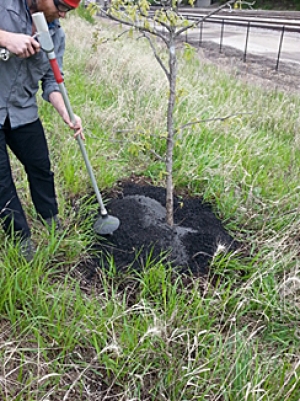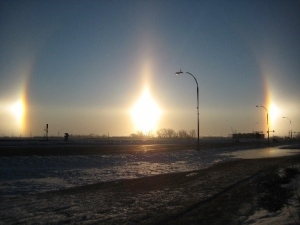
Plant Anatomy & Physiology Course
When I first started learning about plants, I had a lot of questions. How does a tree gets water from deep in the ground all the way up to leaves 160 feet in the air? How are plants able to survive cold winters like this one? How do seeds know when to germinate in the spring? Why are most plants green anyway? Why not blue or pink or black? Do plants communicate with one another? How do plants defend themselves from attack by insects? Whew! That's a lot of stuff to learn! The more I dug into this (no pun intended), the more I discovered how amazing, adaptable, and beautiful plants can be.
Improvements on the Oak Leaf Trail
The Oak Leaf Trail is my regular bike commute route from home to work and back. The morning commute is an especially quiet and beautiful experience from the morning a whitetail deer ran alongside me for 50 meters to watching the continuous show of wild geraniums in the spring through scarlet colored sumac in the fall.
A former Chicago-Northwest Railway line, I sometimes imagine what it would have been like to witness those locomotives flying past. In the 1930s, the “400” trains that rumbled along this route were the fastest long-distance passenger trains in the world! The 400 train was named for the route distance of 400 miles between St. Paul, MN and Chicago, IL which it could cover in 400 minutes.
Wisconsin drought resistant plants
Has the weather lately left you feeling parched yet sweaty? Us too, but we can hardly stay inside knowing Autumn’s flower and foliage color display is on its way. While the weather remains unseasonably warm and minimal if any rain is in sight, many of our Wisconsin native plant species can take the heat as well as the drought conditions.
Naturescaping Design Principles
People around the country are joining in on the growing native plant gardening movement. In addition to providing a multitude of vital habitat components for wildlife, native grasses, sedges, wildflowers, trees, shrubs, and ferns also conserve water, are less maintenance than majority of ornamental cultivars, and save money in multiple ways.
Yet, even with all these benefits it can be challenging to work through the many stigmas that have come to over shadow Naturescaping.
False Spring: How Plants React to Unseasonal Warmth
Coming from the perspective of a human (a true biological juggernaut of adaptability), the past couple of weeks have been a real joy. For a few glorious days, I wore a tank top outside at work (in February!) and today I’m walking in a winter wonderland again. While the particular weather pattern we’ve just experienced here in Milwaukee has been a treat for us humans, for the plants around us, trees and shrubs especially, it will prove to be more of a trial.
Soil Sleuthing
You know that old saying: “you can’t judge a book by its cover?” It turns out the same is true of restoration projects like Three Bridges Park. You can’t get the full story just from looking at the “cover” — what’s visible above the surface. What you see above ground doesn’t tell you everything, because the proof is in the pudding ... or in this case, the soil. Three Bridges Park is on the site of a brownfield (a vacant post-industrial parcel of land) in the Menomonee Valley. With every passing year, Three Bridges Park loses its resemblance to a brownfield and gains resemblance to a natural greenspace.
See For Yourself - Healing the Land
Protection and restoration of the land is an essential part of what we do. Through hands-on work, our Land Stewardship team and volunteers grow healthy native habitats in which animals and plants can thrive. These areas are also important to our environmental education programs. Plus they are a great place to explore the natural world! See for yourself how we are caring for the land.
Get To Know Land Steward Terminology!
Thank you for stopping by to read our blogs! This edition won't introduce you to a new native or invasive plant, but introduce you to some terminology that we use as Land Stewardship staff at the Urban Ecology Center. These terms may be used differently at other nature centers; it doesn't mean we (Urban Ecology Center) are right and they are wrong, it just means the terms are used slightly different. Now, let the show begin!
Plant Community Highlight: Seed Dispersion
Let's be honest, nature is awesome. The splendor and beauty that it holds is more that we can bear: breathtaking sights like the Grand Canyon, or the smallest ant that can lift 5,000 times its weight. There are things that will only be seen on rare occasions (sun dogs – a crazy light phenomenon), and things that will be taken for granted because it's seen day in and day out (the sunrise). We are going to discuss one of those "everyday" wonders: seed dispersal.
Baby Parks and Plantings
In the spring of each year, all sorts of adorable baby animals can be seen. This spring, I saw baby Great Horned Owls (called owlets), baby White-footed Mice (called pups, pinkies or kittens) and baby Brown Snakes (called snakelets or hatchlings). We don’t usually pay close attention to “baby” plants, but they’re showing up now too!
Copyright © 2023 The Urban Ecology Center












